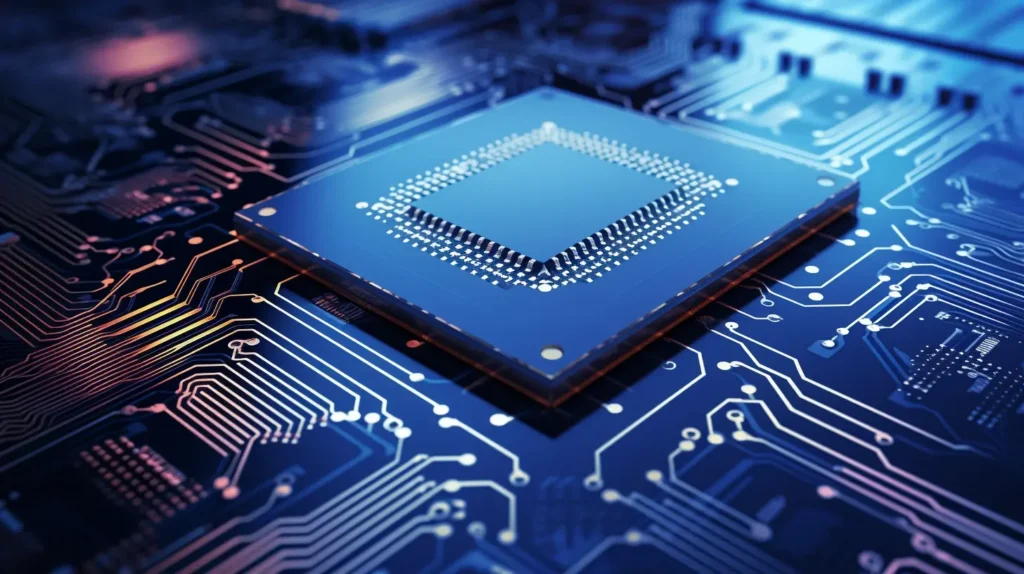Light-powered Recently, scientists have developed a groundbreaking new technology that utilizes light to power small gears. This innovative advancement has the potential to significantly impact industries such as medicine and electronics, potentially changing the way we approach these fields. It is worth delving deeper into this revolutionary development and exploring its potential implications for the future.
1. Light-powered microscopic gears are a revolutionary concept in the field of nanotechnology
The emergence of light-powered microscopic gears represents a groundbreaking concept in nanotechnology. By utilizing the power of light, these minuscule gears hold the promise of driving innovation across numerous industries, including medicine and electronics. The capacity to manipulate and regulate these gears at the nanoscale presents new opportunities for the development of advanced technology and devices that were once deemed unattainable. This breakthrough has the potential to transform the approach to challenges in various fields and lay the foundation for exciting new developments.

The development of light-powered microscopic gears is a groundbreaking advancement in nanotechnology. These tiny gears have the ability to capture light energy and transform it into mechanical motion on a scale that has never been achieved before. This breakthrough has the potential to transform the way we approach and utilize nanotechnology, leading to new opportunities for applications in areas such as medicine, electronics, and materials science. This signifies a significant advancement in the ongoing quest to utilize light at the nanoscale.
2. The potential impact of this technology on various industries and technologies is immense.
The potential impact of emerging technologies on industries and technologies is substantial. It is crucial to consider and evaluate the potential impact of new technologies as they evolve. By understanding and assessing the potential impact of a technology, businesses and individuals can better prepare for and adapt to the changes it may bring, as well as identify new opportunities for growth and innovation.
Achieving precise control and efficiency at the nanoscale, where these gears operate, is a primary obstacle due to the sensitivity to small environmental variations such as fluctuations in temperature or changes in light intensity. These factors can have a considerable impact on the gears’ performance, making it difficult to maintain consistent functionality as they need to respond accurately to external stimuli without being disrupted by external factors.
3. However, there are current limitations and challenges in developing these light-powered microscopic gears
The development of light-powered microscopic gears is currently facing significant limitations and challenges. One of the primary obstacles is achieving precise control and efficiency at the nanoscale, where these gears operate. At such tiny sizes, even small environmental variations, such as fluctuations in temperature or changes in light intensity, can have a considerable impact on the gears’ performance. This sensitivity makes it difficult to maintain consistent functionality, as the gears need to respond accurately to external stimuli like light without being disrupted by external factors.
Another critical challenge in developing light-powered microscopic gears is ensuring the efficient transfer of energy from light to mechanical motion. Additionally, the durability of these gears is a significant concern at the nanoscale, as materials are more susceptible to wear and tear due to constant movement and friction between gear components.

It is important to find materials that are both efficient at converting light into motion and resilient enough to withstand continuous operation for the successful development of these microscopic systems. Furthermore, the interaction of light with materials at the microscopic level can be unpredictable, which can hinder the gears’ ability to convert light energy into mechanical work with high precision and reliability. Researchers need to carefully design these gears to optimize their energy conversion efficiency while minimizing energy loss.
Additionally, the durability of light-powered microscopic gears presents a significant challenge. At the nanoscale, materials are more prone to wear and tear due to the constant movement and friction between gear components. Over time, this can lead to the degradation of the gears, reducing their lifespan and effectiveness. Finding materials that are not only efficient at converting light into motion but also resilient enough to withstand continuous operation is crucial for the successful development of these microscopic systems.
Additionally, researchers are also working to address the technical challenges of miniaturisation in gear manufacturing. This involves creating gears at the microscopic level, which requires extremely precise fabrication techniques and the use of advanced nanotechnology and sophisticated equipment. One of the main obstacles for researchers is ensuring that these tiny gears can be consistently produced at a large scale, which is crucial for making this technology practical for real-world applications.
To address these challenges, a multidisciplinary approach is necessary, integrating materials science, nanotechnology, and physics to develop efficient and durable light-powered microscopic gears. Despite the difficulties, researchers are making headway and are hopeful that ongoing innovation will result in more dependable and resilient designs. This could potentially unlock new opportunities in fields like medicine, robotics, and nanotechnology.
4. The key benefits and advantages of this technology include its potential for miniaturization, high precision, and low energy consumption.
Light-powered microscopic gears offer several key benefits and advantages, making them an exciting technology for advanced applications. One of the most significant advantages is their potential for miniaturization. Due to their operation at the microscopic or even nanoscale level, these gears can be integrated into extremely small devices or systems where traditional mechanical components wouldn’t fit. This capability opens up possibilities in fields such as nanorobotics, medical devices, and biotechnology, where ultra-small and precise components are essential.
One of the key advantages is the high precision that comes with light-powered microscopic gears. By adjusting the intensity, direction, or type of light used to power them, these gears can be controlled with a remarkable degree of accuracy. This level of control is essential for tasks that demand finely-tuned movement, like in microsurgery, optical instruments, or scientific tools that operate on a molecular or cellular level. The ability to control these gears with such precision not only allows for delicate operations but also ensures high efficiency.
Furthermore, these gears are recognized for their minimal energy usage. As they are operated by light, they do not depend on conventional energy sources such as electricity or fuel, which ultimately lowers the overall energy requirement. This makes them a sustainable and economical option for powering small-scale devices. Their energy efficiency also improves the practicality of using them in scenarios where reducing power consumption is crucial, such as in medical implants or remote systems with limited battery life or energy resources.
In general, the compact size, precise operation, and minimal energy usage of light-powered microscopic gears make them a highly beneficial technology for advancing fields that need efficient, sustainable mechanical systems. These advantages are expected to spur further innovation and exploration of their potential applications.
5. This technology has implications for various fields such as medicine, engineering, and electronics
The light-powered microscopic gear technology has important implications for various fields, such as medicine, engineering, and electronics. In the medical field, it has the potential to revolutionize procedures like minimally invasive surgery and targeted drug delivery by enabling the creation of highly precise and tiny devices. These microscopic gears could be utilized to develop nano robots capable of navigating through the bloodstream to deliver medications directly to affected areas or perform delicate internal procedures without major incisions. Furthermore, they could facilitate the development of highly sensitive diagnostic tools, allowing for earlier and more accurate disease detection. .

In the engineering field, this technology has the potential to significantly impact the advancement of micro-electromagnetically systems (MEMS) and nano-electromagnetically systems (NEMS). These systems are utilized in a wide range of industries, including automotive sensors and aerospace technologies, where precision and reliability are paramount. The ability to miniaturise these light-powered gears could result in more efficient, durable, and smaller components, ultimately improving the performance of mechanical systems in various sectors.
The integration of light-powered microscopic gears in electronics has the potential to revolutionize the way devices are powered and how components move and interact at the micro and nano levels. This advancement could lead to the creation of more energy-efficient, lightweight, and compact electronic devices. For instance, these gears could be utilized to create more efficient optomechanical systems or to develop new types of sensors and actuators that operate with greater precision while consuming minimal power. These developments would be especially advantageous for mobile and wearable devices, where space and energy are limited.
In summary, this innovative technology has wide-ranging implications for medicine, engineering, and electronics, with the potential to bring about new levels of precision, efficiency, and miniaturization in these important fields. Ultimately, these advancements could enhance the way we live, work, and interact with technology.
6. Potential applications of light-powered microscopic gears include micro-robotics for targeted drug delivery, high-precision sensors, and advanced optical computing systems.
The potential uses of light-powered microscopic gears are extensive and revolutionary, spanning multiple advanced fields. One particularly exciting area is micro-robotics, especially for targeted drug delivery in medicine. These tiny robots, powered by these gears, could be created to move through the human body, reaching specific areas to administer precise doses of medication. This would be especially valuable in treating conditions like cancer, where targeted treatment could minimize side effects and enhance the effectiveness of therapies by concentrating only on the affected cells.
Another important use for these gears is in creating high-precision sensors. These sensors, when equipped with light-powered gears, can achieve a previously unattainable level of accuracy and sensitivity. This is particularly beneficial in industries like aerospace, defense, and environmental monitoring, where precise measurements are crucial. These sensors have the potential to detect even the slightest changes in temperature, pressure, or motion, leading to advancements in areas such as earthquake detection, climate monitoring, and space exploration.
In advanced optical computing systems, the use of light-powered microscopic gears could potentially lead to the creation of faster and more efficient devices. Optical computing, which relies on light instead of electrical signals to process information, has the potential to revolutionize computing by significantly boosting processing speed and cutting down on energy usage. By incorporating microscopic gears into these systems, improvements in data transfer, switching mechanisms, and overall computational efficiency could be achieved, pushing the limits of current technology.
The versatility of light-powered microscopic gears has the potential to transform a wide range of industries, from medicine to computing. Continued research and development in this technology could lead to significant innovations in disease treatment, environmental measurement, and information processing in the future.
7. Looking to the future, advancements in this technology could lead to even more sophisticated and versatile applications
As we look ahead, the progress in this technology has the potential to open up new and more advanced possibilities. By pushing the boundaries of innovation, we could see tools that are not only smarter but also adaptable to a variety of situations, solving problems more efficiently than ever before. This could lead to breakthroughs in areas like artificial intelligence, machine learning, and automation, where systems become more intuitive and capable of performing tasks with minimal human intervention.

Furthermore, as technology becomes more integrated into our daily lives, it could transform industries such as healthcare, education, and transportation, offering new opportunities to improve productivity, personalize user experiences, and tackle complex global challenges. The future is full of possibilities, and these advancements could fundamentally change the way we live, work, and engage with the world around us.
8. In conclusion, the development of light-powered microscopic gears holds significant promise for driving technological advancements and shaping the future of various industries.
In summary, the advancement of light-powered microscopic gears shows great potential for driving technological progress and shaping the future of various industries. These small, energy-efficient components have the potential to revolutionize fields such as healthcare, manufacturing, and robotics by enabling more precise and efficient mechanisms.

The ability to use light as a power source opens up new possibilities for miniaturised devices, from advanced medical instruments to highly specialized tools used in research and production. As this technology continues to develop, it could lead to breakthroughs that enhance productivity, improve accuracy, and reduce the environmental impact of various processes, ultimately contributing to a more innovative and sustainable future.
Interested in Reading My Article On:Hackers can turn your smartphone into an eavesdropping device



